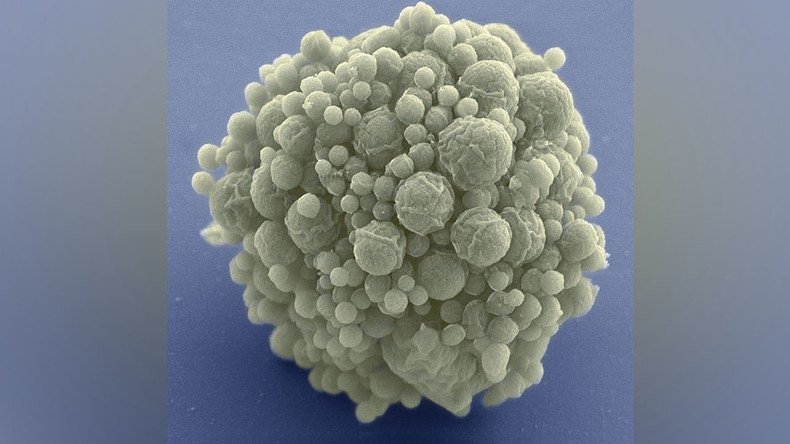Mysterious tiny germs: US scientists ‘build’ bacteria with smallest genome on Earth

American scientists have created a bacterium with the smallest number of genes ever, but they have no idea what almost one-third of them do. What the “designers” do know is that without them, the tiny stripped-down life form would die.
At the J. Craig Venter Institute (JCVI) in California, where it was designed and tested, the first minimal synthetic bacterial cell is simply called JCVI-syn3.0.
JCVI-syn3.0 #minimalcell candids - images by Tom Deerinck & Mark Ellisman of NCMIR @UCSanDiego#synbio#genomicspic.twitter.com/48gAomUgeC
— J. Craig Venter Inst (@JCVenterInst) March 24, 2016
It has only 531,560 base pairs and 473 genes. For comparison, lead scientist J. Craig Venter’s first synthetic cell, JCVI-syn1.0, which he and his team built in 2010, had 1.08 million base pairs and 901 genes.
It took researchers three cycles of designing, building, and testing to pare down the tiny critter, each time making sure that quasi-essential genes necessary for robust growth remained. Eventually, they got a viable, self-replicating minimal synthetic cell that contained just 473 genes.
However, the achievement 20 years in the making led to more questions that must now be answered.
“Our attempt to design and create a new species, while ultimately successful, revealed that 32% of the genes essential for life in this cell are of unknown function,” the JCVI said in a press release.
On attempting to further minimize the synthetic genome through trial and error, the researchers realized that without some of the genes, the cell couldn’t survive.
“After improving transposon methods, they discovered a set of quasi-essential genes that are necessary for robust growth which explained the failure of their first attempt,” the team wrote.
The scientists don’t know what 149 of the genes in their new stripped-down life form actually do, but they do know that they are necessary if the bacterium is to live.
“We don’t know what they provide or why they are essential for life — maybe they are doing something more subtle, something obviously not appreciated yet in biology,” Venter said, as cited by Quanta magazine. “It’s a very humbling set of experiments.”
They can broadly classify some of the 149 genes based on their structures, but still have little idea of what precise functions each serves in the cell.
It appears that 41 percent of them are responsible for genome expression information, 18 percent are linked to the cell’s membrane structure and function, and another 7 percent control preservation of genome information.
“JCVI-syn3.0 is a versatile platform for investigating the core functions of life and for exploring whole-genome design,” the team wrote in a synopsis for an article in Science magazine to be published on March 25.












